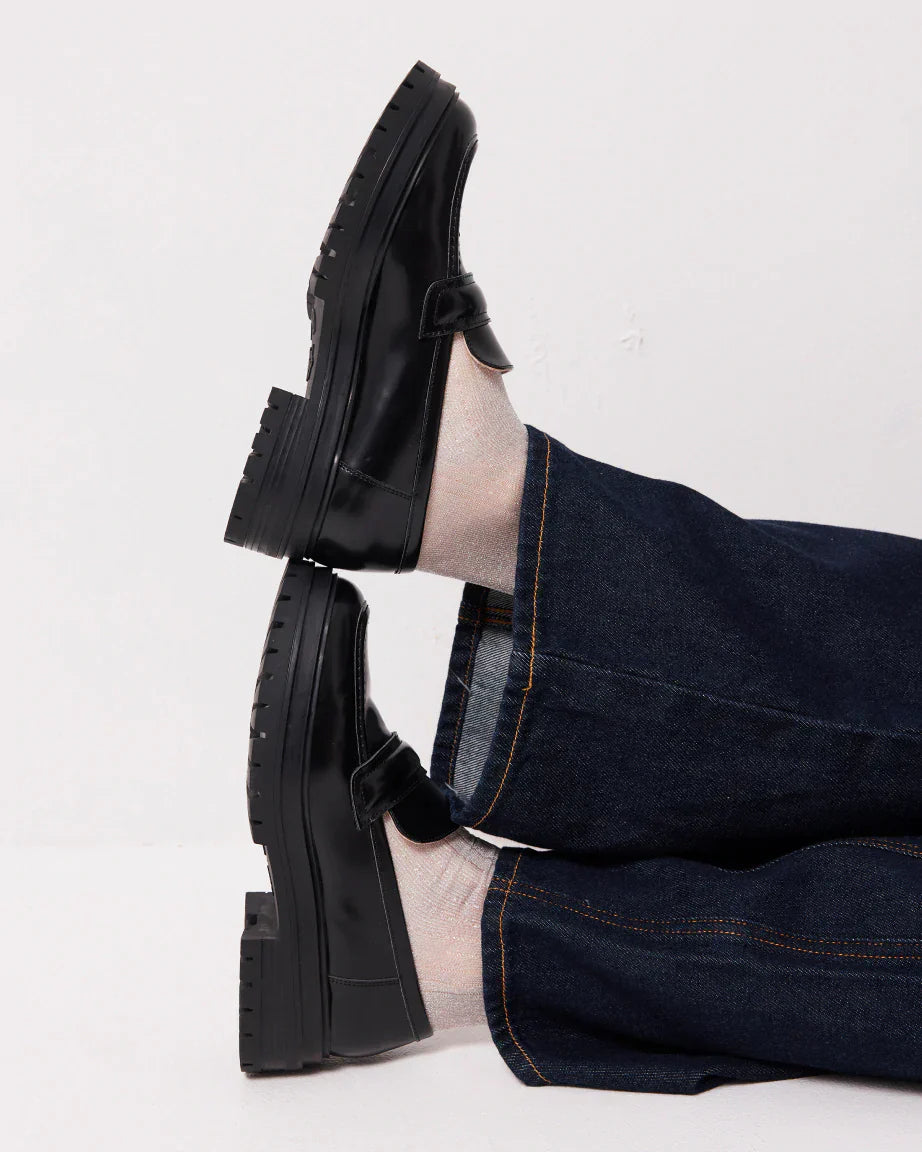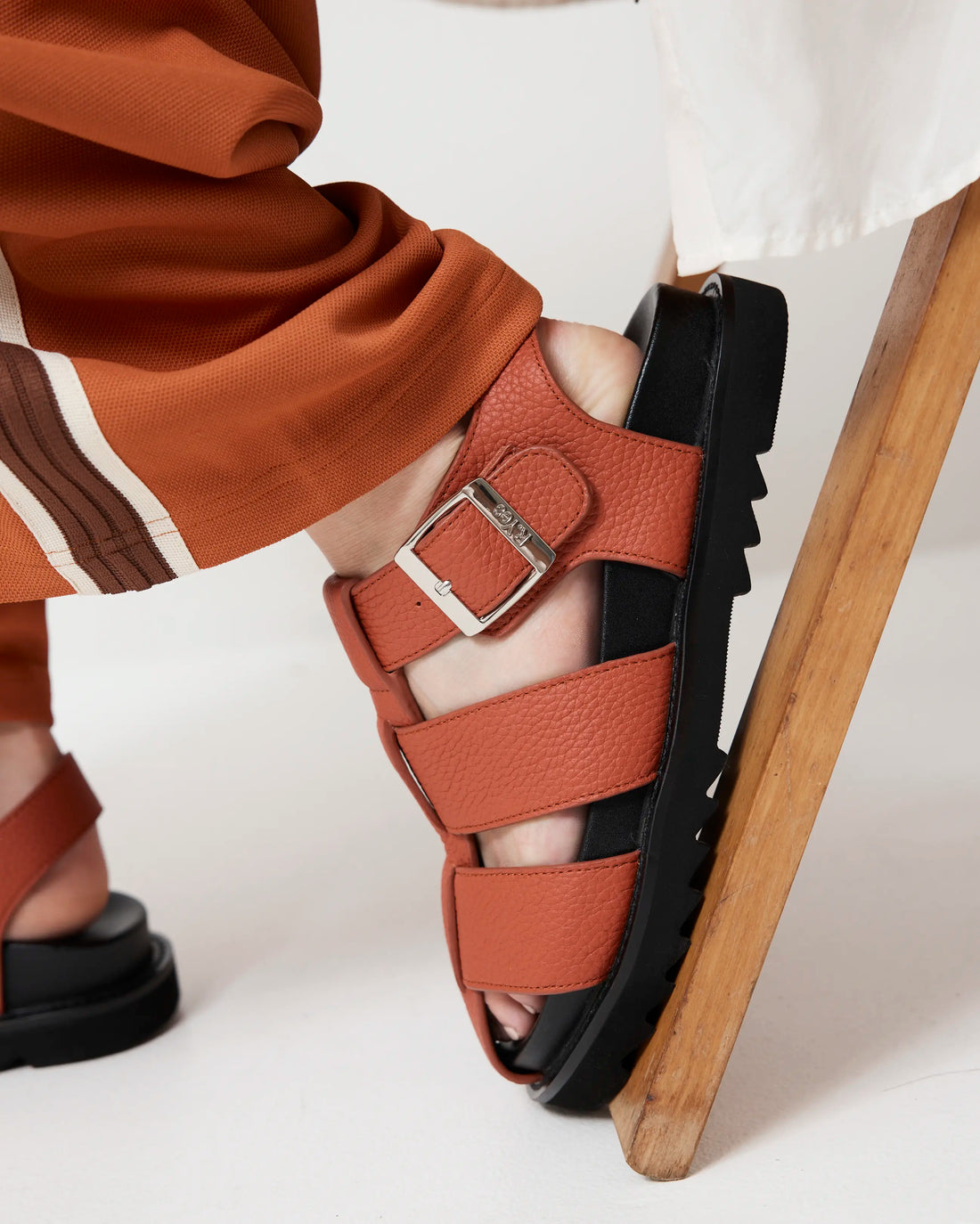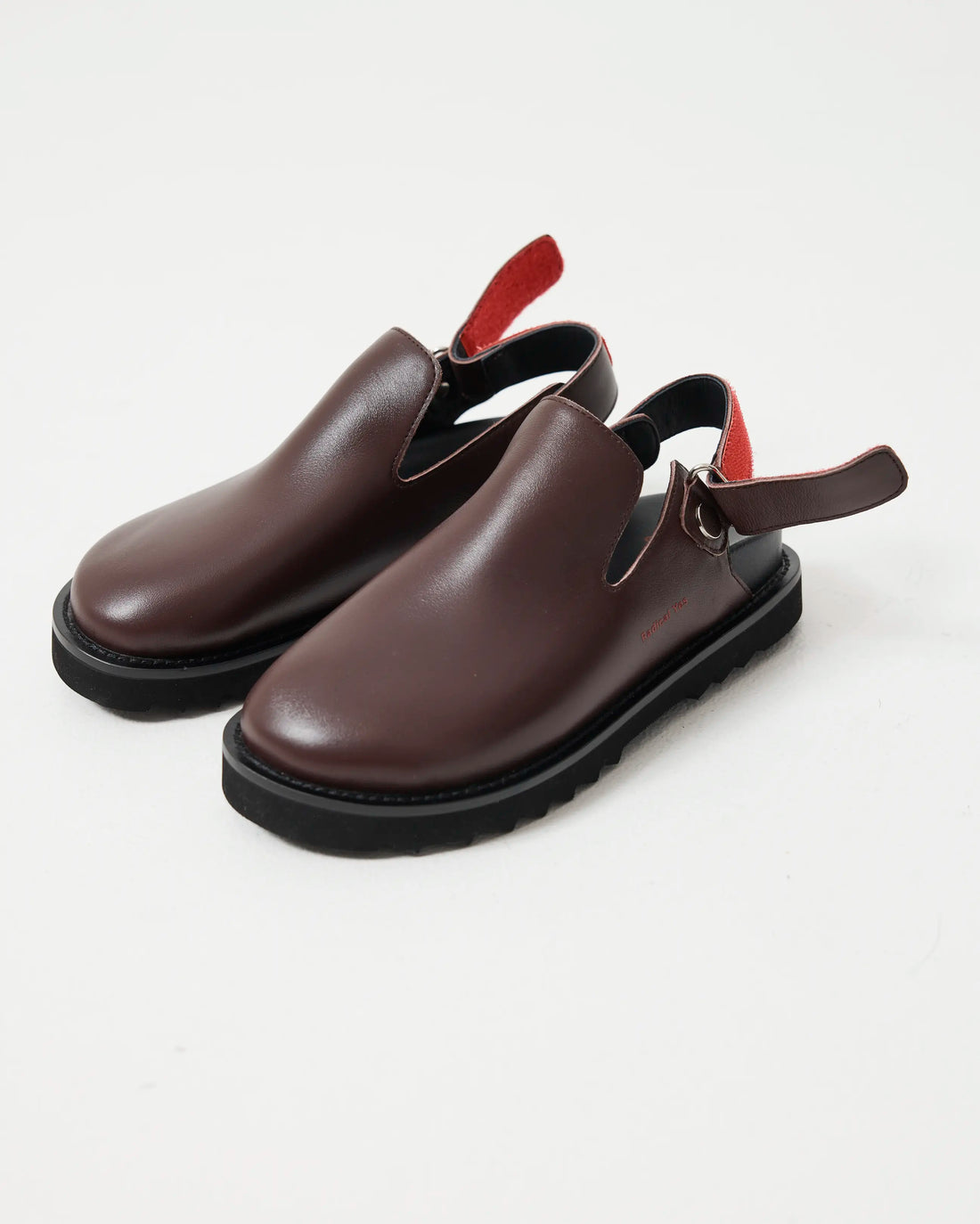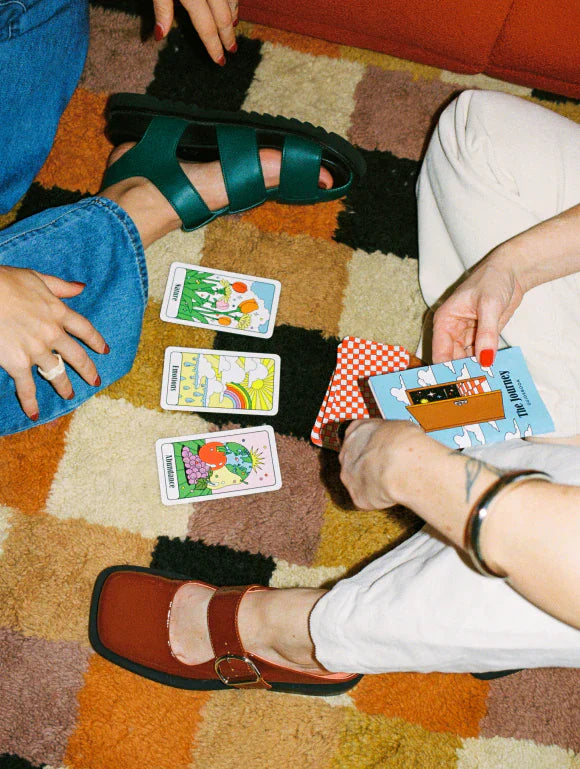If you have been following us for a while, you will know that was about the time that we changed makers and began to experiment with a host of manufacturing capabilities that were previously not available to us in our small quantity production scales. From specifying and developing our own outsole moulds, to sourcing better quality materials in our uppers, like this year’s shearling boot program lined in Australian Merino Wool.
It has been an exciting journey and one that has only served to deepen our love of the footwear category and the process of making shoes. We have never felt more proud of the products we are making than we are right now.
As we have built on our technical knowledge, we have found ourselves with a growing obsession for shoe care. Aside from the important sustainability gains that are made when we care for our belongings, we have found something almost spiritual in caring for your shoes as a signifier for the way we carry ourselves with deliberate intention through life. It is a kind of physical manifestation of the ‘Hasten Slowly’ idea to slow down, take notice and take care and one of the reasons we created our own ‘Full Moon Blessing’ shoe care ritual.
As customers have come to us to ask us how to best care for their shoes, we have also found ourselves spending hours watching Youtube videos on shoe care best practice and talking with our own local industry experts on what it takes to extend the life of your shoes.
Which is what led us to the creation of this video with our personal shoe care Guru Anna from On The Mend in Nicolson Street, Carlton. A veteran of 20 years in the footwear industry, we have leaned on Anna for all kinds of technical advice over the 5 years we have been working with her.
In this video, we share Anna’s key tips on extending the life of your shoes, including:
- At what stage in the shoe lifecycle to have a ‘Topy’ (a second rubber sole) applied to the soles of your dress shoes – spoiler alert, it’s sooner than you think!
- How perspiration can impact the lifespan of your shoes and what to do about it
- Why shoe rotation is important and why you should be wearing at least 3 different pairs of shoes a week
We would also love you to like and subscribe to our YouTube channel as we build more in-depth visual stories about our products and approach on this platform.

Show your shoes some love with our care products here!
Transcript:
Kerryn: All right, so, we're here at On the Mend with the beautiful Anna, who is someone that we've been working with for many years, who helps us with all our shoe repairs and lots of advice actually. When we're doing production, we come and talk to Anna.
So I thought, just to get started, you should tell us about your background in shoes.
Anna: Okay I I started about 20 years ago, when I started shoemaking. So I actually applied for a shoemaking course at RMIT in 2000. But it wasn’t about shoes really; it was about machinery. It was really focused on you know, how things are made and all that sort of thing. I literally opened up the white pages, because back then, you know, the internet was not what it is now, and rang them, and then three months later they gave me a call and said “hey, do you want to do the course?” and I did, and I really enjoyed it. But, at that point in my life, I wanted a job in shoes, and I kind of fell into repairs, and that’s kind of where I found that was the best thing for me because I find it really fascinating and interesting. Tearing something apart and putting it back together in a sense, and reverse engineering, you know, that’s always been my thing, but how do I make something look good again? That’s why I do shoe and bag repair. Not because I necessarily… Never have I ever wanted to make a pair of shoes from scratch, from my own design, and have my label in them. Ever.
Kerryn: So it’s all about the reverse engineering functionality. That’s so interesting because we’ve been watching YouTube videos about people ripping apart shoes, so we can learn more and understand more too. So, and there is that, it’s so fascinating once you start taking them apart.
Anna: Oh, oh my god, absolutely, and all the different techniques, and all the steps involved in making a pair of shoes. Like so many people think shoes are like clothes in the same way that you can take out a pattern, and say, “I just want this a little bit different”. But it has its structure, and it has to be…
Kerryn: Because it’s three-dimensional?
Anna: Exactly, and also it’s hitting the ground. It’s hitting the ground, pounding, and you know, that’s where you've got to treat them with a little bit of respect.
Kerryn: And that’s what we want to talk about today! That was a very good segue.
So basically, what we’ve done is we’ve bought down three different shoes from our current collection, and I wanted to get you to talk through the best way people can care for their shoes, keeping in mind the longevity they can expect out of a pair of commercially bought, sub-three-hundred-dollar pair of shoes. Right?
So, this is our Liberation Loafer, and this is been in our collection now for over a year. This has a rubber resin outsole. So if a customer was to buy these, what point would you recommend they start getting a topy or something put on them, or would you recommend that?
Anna: I would, I would, and I’d do it especially in the front, I would do it sooner than later, because prevention is better than cure.
Kerryn: Ah! Prevention is better than cure.
Anna: Always, always. For this sort of shoe, not necessarily for that. With this one, definitely, a dress shoe with a half-rubber sole. Because what you want to do is, it’ll last so much longer if that rubber sole wears 2 ml, you take that off, you put a new one on, every season, depending on how you’re wearing them, and how often you’re wearing them. That means the structure of the shoe, the stability of the shoe, stays as is. So all we’re doing is replacing a rubber sole.
Kerryn: Ahhh! So it’s right at the beginning!
Anna: Right at the beginning.
Kerryn: Ahh, see that’s interesting because I always thought it was about three months in. So it’s right at the beginning.
Anna: The heels on the other hand, about three months in. Because what you want to do is, what we’re doing is we’re taking off the top section of the heel, just that, whatever that is, like 6 ml. So wait until that wears to a certain point, so it doesn’t hit the actual block. But when it wears to there, then we take that off, we put a new one on, and your shoes are like brand new again.
Kerryn: That’s the important point too, about when they hit the block. So you know you’re hitting the block…
Anna: You’ll see that line, there’s like the stack, stack, and then the last one in there, that’s where you want to, like just before that point. Once you hit before that point, that’s when you want to change them. Because it’s cheaper for you and it's better for the shoe, because it means I don’t have to rebuild a shoe. Once you start rebuilding, you know, it gets a little bit more expensive.
Kerryn: And also, it’s harder to fix right?
Anna: Well, it takes longer.
Kerryn: Yeah. So topy up the front, straight up, to protect the initial integrity of the shoe. And then, actually adding the heel cap at about 3 months in.
Anna: Yeah, roughly. But that depends on how you’re wearing your shoes.
Kerryn: Let’s talk about this. Let’s talk about shoe rotation, while we’re talking about this. Because, I know we’ve had a lot of discussions over the years about how many people maybe tend to wear the same shoes every single day, and then come in and say “my shoes didn’t last”.
Anna: And they never will. Regardless of the brand, regardless of price point, if you wear your shoes every single day, they are going to wreck so much faster, because, I know it sounds really gross, but you are sweating, you’re feet sweat a lot. So, you can imagine, you take your shoes off at night, they’re still wet, you know, you may not notice it, but they’re really wet. And then, 10 hours later, 12 hours later, or maybe even 8 hours later, then you’re putting them back on, so they haven't even had the chance to dry out and just, you know, get strong again, you know. I don’t know the right term for it, but they need to dry out, for you to put them back on. And that’s why we say to always rotate shoes, but as much as you can, and I know that there are some points where you're going to have to - like if you’re going away - but that’s a short time. But in general, you should be rotating your shoes, I would say at least three pairs a week. At least three pairs. So you’ve got more than 24 hours, so they get to dry out. And they will last exponentially longer, because a lot of the times it’s not just the soles, it’s inside of the shoes which can start to rot, and that’s just the nature of it.
Kerryn: Because it's in a hot, sweaty environment.
Anna: Hot sweaty environment, and whether it’s leather or foam, or EVA, or whatever it is. It is always going to rot from the inside as well as the outside. So you’re going to get, especially around the ball of the foot, but through there, that’s where it starts to thin out, and that’s because you’re wearing them too much in a row, too many days in a row.
Kerryn: And that’s an interesting point when we’re thinking about something like the Saturn Returns Boot. Which we make every winter. It’s got the Australian Merino Wool lining this year; we source Australian Merino Wool. And that is the same sort of thing, where it’s like, wool is a wicker, so it extracts moisture from the foot, and that is even more important that you need to let it air out and dry between wears.
Anna: I think it’s really important for people to realise that shoes are not like clothes. They’re not clothes, they’re shoes. It’s different. You can wear a jacket every day, that’s not a problem. You can’t wear the same pair of shoes every day and expect them to last; it’s not going to happen.
Kerryn: And that’s because you’re hitting the road, right? Like you’re not dragging your jacket on the concrete every day are you? So, it’s that thing.
Anna: People always say, “How can I get my shoes to last longer? My dad had a pair of shoes for X amount of years and they never wrecked”. And I’m like, you know what, just don’t wear them. Because they hit the ground, and if you’re walking in a pair of shoes, they’re eventually going to wear. The analogy I use is tires - if you drive you’re car every single day, and you’re rough, you stop and you start, you’re breaking. They’re only going to last you a year, a year and a half. My car, I haven’t done a lot of kms in my car, you know, like, I’ve had it since new, and in 7 years I haven’t changed the tyres.
Kerryn: Yeah, right, because you haven’t done a lot of kms. And that’s the same with the shoes, right, because the soles are like tyres, right, because they’re tread, they are rubber on these sorts of styles of shoe. So we know that these are rubber soles, and so they are going to be prone to wearing, and we’re also, something that we are investigating ourselves is how tread can affect wear, and how different types of tread is more prone to certain types of wear. So exactly as you're saying, like this kind of really flat tread needs to be rotated to protect the tread.
Anna: Absolutely, absolutely, there’s no real pitch in the, what’s the word that I’m looking for, that curve in it. So when you’re hitting it, you’re hitting it hard on the ground. That’s the style of shoe, they’re always going to wear around, especially around the heel area. But you can’t help that, that’s just the nature of a flat sole. Everyone's got a pair of Converse, you know, that kind of thing where, you know, the All Stars, they always wear down here. That’s because they are completely flat. So yeah.
Kerryn: Well it’s been really informative, as always, and so lovely to see you. There’s so many, like, so much I’ve learnt from Anna over the years from coming in here. So we are so grateful for your time this morning, and I’m sure we’ll be back to talk about other things another day. Yeah, because we’re on a project at the moment, as you know, we’re trying to find a way to be able to replace the outsoles on sneakers, which is a bit of a mission impossible, but we’ve set our task on it.
Anna: Yeah, absolutely. I’m looking forward to it, exciting!






